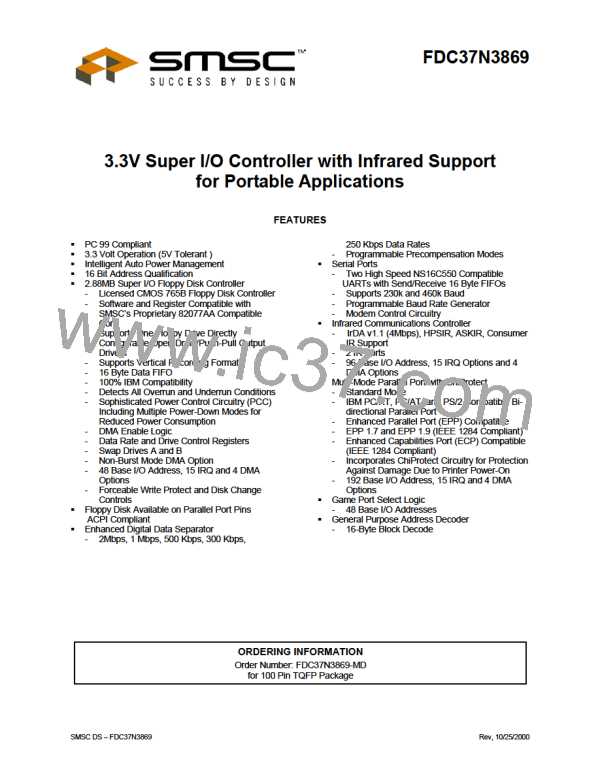Table 61 - EPP Pin Descriptions
TYPE DESCRIPTION
EPP
SIGNAL
EPP NAME
nWrite
Address/Data
Interrupt
nWRITE
PD<0:7>
INTR
O
I/O
I
This signal is active low. It denotes a write operation.
Bi-directional EPP byte wide address and data bus.
This signal is active high and positive edge triggered. (Pass
through with no inversion, Same as SPP).
WAIT
nWait
I
This signal is active low.
It is driven inactive as a positive
acknowledgment from the device that the transfer of data is
completed. It is driven active as an indication that the device is
ready for the next transfer.
DATASTB nData Strobe
RESET nReset
O
O
O
This signal is active low. It is used to denote data read or write
operation.
This signal is active low. When driven active, the EPP device is
reset to its initial operational mode.
ADDRSTB nAddress
Strobe
This signal is active low. It is used to denote address read or
write operation.
PE
SLCT
Paper End
I
I
Same as SPP mode.
Same as SPP mode.
Printer
Selected
Status
NERR
PDIR
Error
I
O
Same as SPP mode.
Parallel Port
This output shows the direction of the data transfer on the
parallel port bus. A low means an output/write condition and a
high means an input/read condition. This signal is normally a low
(output/write) unless PCD of the control register is set or if an
EPP read cycle is in progress.
Direction
Note 1: SPP and EPP can use 1 common register.
Note 2: nWrite is the only EPP output that can be over-ridden by SPP control port during an EPP cycle. For correct
EPP read cycles, PCD is required to be a low.
SMSC DS – FDC37N3869
Page 76
Rev. 10/25/2000

 SMSC [ SMSC CORPORATION ]
SMSC [ SMSC CORPORATION ]